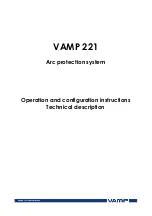
This is now the theoretical maximum of the current flowing in the CTs when bolted symmetrical three
phase fault occurs in the LV side of the transformer. As could be seen the HV side max current is about
15 times the CT rating and LV side about 19 times the CT rating, there should not be seen full
saturation of the CT in neither side even the accuracy limit factor for both CTs is 10 times nominal.
(5/10P10 this last “10” tells that the CT output is in its given measurement class (5% and 10%) when
the current is <10 times nominal. This however is related to the nominal burden, which is normally very
high compared to modern protection relay CT input).
Now the next check should be into the burden of the CTs in both sides to see what the real CT
accuracy limit factor is.
Important initial data for this check is the VA of the CTs on both sides, how long wiring to relay from the
CTs, what is the cross-section and material of the wires and how the CTs are connected.
Let’s start from the wiring caused burden for the relay.
Resistance in a conductor is calculated in following way:
Just for information when designing the CTs and wiring: 1. If you double the length of wire you will
double the resistance of the wire. 2. If you double the cross sectional area of the wire you will cut its
resistance in half. Most effect is in that if you use 1A secondary instead of 5A, all burdens will drop to
level smaller to portion of 5A
2
e.g. 1/25.
Now normally copper cables are used to connect CTs to relay, anyway in below table is presented also
Aluminum resistivity and conductivity properties.
These values in this table present the resistivity in the given tempe20ºC. For calculation of the
conductor resistivity in other temperatures use following formula:
These values in this table present the resistivity in the given tempe20ºC. For calculation of the
conductor resistivity in other temperatures use following formula:
AQ-T216
Instruction manual
Version: 2.00
© Arcteq Relays Ltd
138
















































